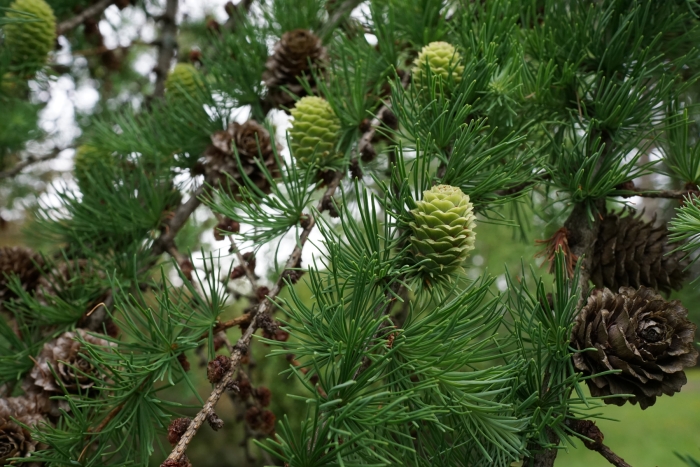Japanese Larch
(Larix kaempferi)
Japanese Larch (Larix kaempferi)
/
/

Plant Image Library from Boston, USA
CC BY-SA 2.0
Image By:
Plant Image Library from Boston, USA
Recorded By:
Copyright:
CC BY-SA 2.0
Copyright Notice:
Photo by: Plant Image Library from Boston, USA | License Type: CC BY-SA 2.0 | License URL: https://creativecommons.org/licenses/by-sa/2.0 | Uploader: Ser Amantio di Nicolao | Publisher: Wikimedia Commons | Title: Larix_kaempferi_(Japanese_Larch)_(34851823316).jpg | Notes: |



















































Estimated Native Range
Summary
Larix kaempferi, commonly known as Japanese Larch, is a deciduous coniferous tree native to mountainous areas of Japan. It is a medium-sized to large tree, reaching heights of 20–40 meters with a trunk up to 1 meter in diameter. The crown is broad conic, with level main and side branches, the latter rarely drooping. This species is notable for its straight growth and the larch’s characteristic deciduous nature, shedding needles in the fall. The needles turn a bright yellow before they fall, adding seasonal interest. Japanese Larch has small cones and smooth gray bark that adds to its ornamental value.
Japanese Larch is valued for its fast growth and adaptability to a range of soil types, though it prefers well-drained, acidic soils. It is widely planted for ornamental purposes in parks and gardens and is also popular as a bonsai subject. The dwarf cultivars ‘Blue Dwarf’ and ‘Nana’ have been recognized for their garden suitability with the Royal Horticultural Society’s Award of Garden Merit. These cultivars are much smaller, making them suitable for smaller gardens or as focal points in larger landscapes. Japanese Larch requires full sun to thrive and benefits from medium amounts of water. It is relatively low maintenance but can be susceptible to larch canker and needle blights.CC BY-SA 4.0
Japanese Larch is valued for its fast growth and adaptability to a range of soil types, though it prefers well-drained, acidic soils. It is widely planted for ornamental purposes in parks and gardens and is also popular as a bonsai subject. The dwarf cultivars ‘Blue Dwarf’ and ‘Nana’ have been recognized for their garden suitability with the Royal Horticultural Society’s Award of Garden Merit. These cultivars are much smaller, making them suitable for smaller gardens or as focal points in larger landscapes. Japanese Larch requires full sun to thrive and benefits from medium amounts of water. It is relatively low maintenance but can be susceptible to larch canker and needle blights.CC BY-SA 4.0
Plant Description
- Plant Type: Tree
- Height: 70-90 feet
- Width: 25-40 feet
- Growth Rate: Rapid
- Flower Color: N/A
- Flowering Season: Non-Flowering
- Leaf Retention: Deciduous
Growth Requirements
- Sun: Full Sun
- Water: Medium
- Drainage: Fast, Medium
Common Uses
Bird Garden, Deer Resistant, Fire Resistant, Low Maintenance, Rock Garden, Street Planting
Natural Habitat
Mountainous areas of Japan
Other Names
Common Names: Modrín Japonský, Japanische Lärche, Kaempfers Lärche, Mélèze Du Japon, Japán Vörösfenyo, Larice Giapponese, Japanse Lork, Goudlork, Japanse Larix, Japanlerk
Scientific Names: , Larix kaempferi, Pinus larix, Larix leptolepis, Larix leptolepis var. murrayana, Larix kaempferi f. rubescens, Larix orientalis, Pinus kaempferi, Abies kaempferi, Abies leptolepis
GBIF Accepted Name: Larix kaempferi (Lamb.) Carrière